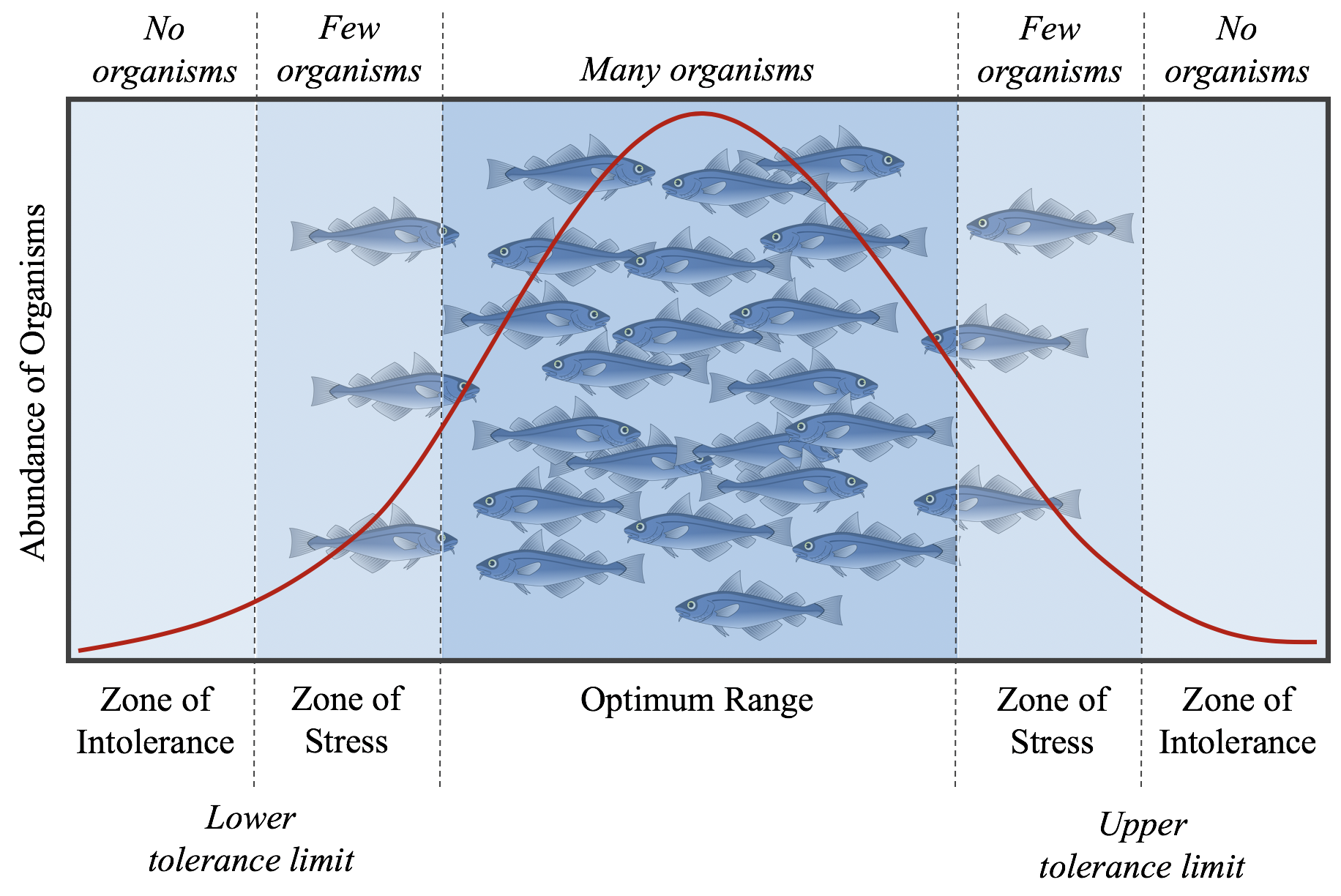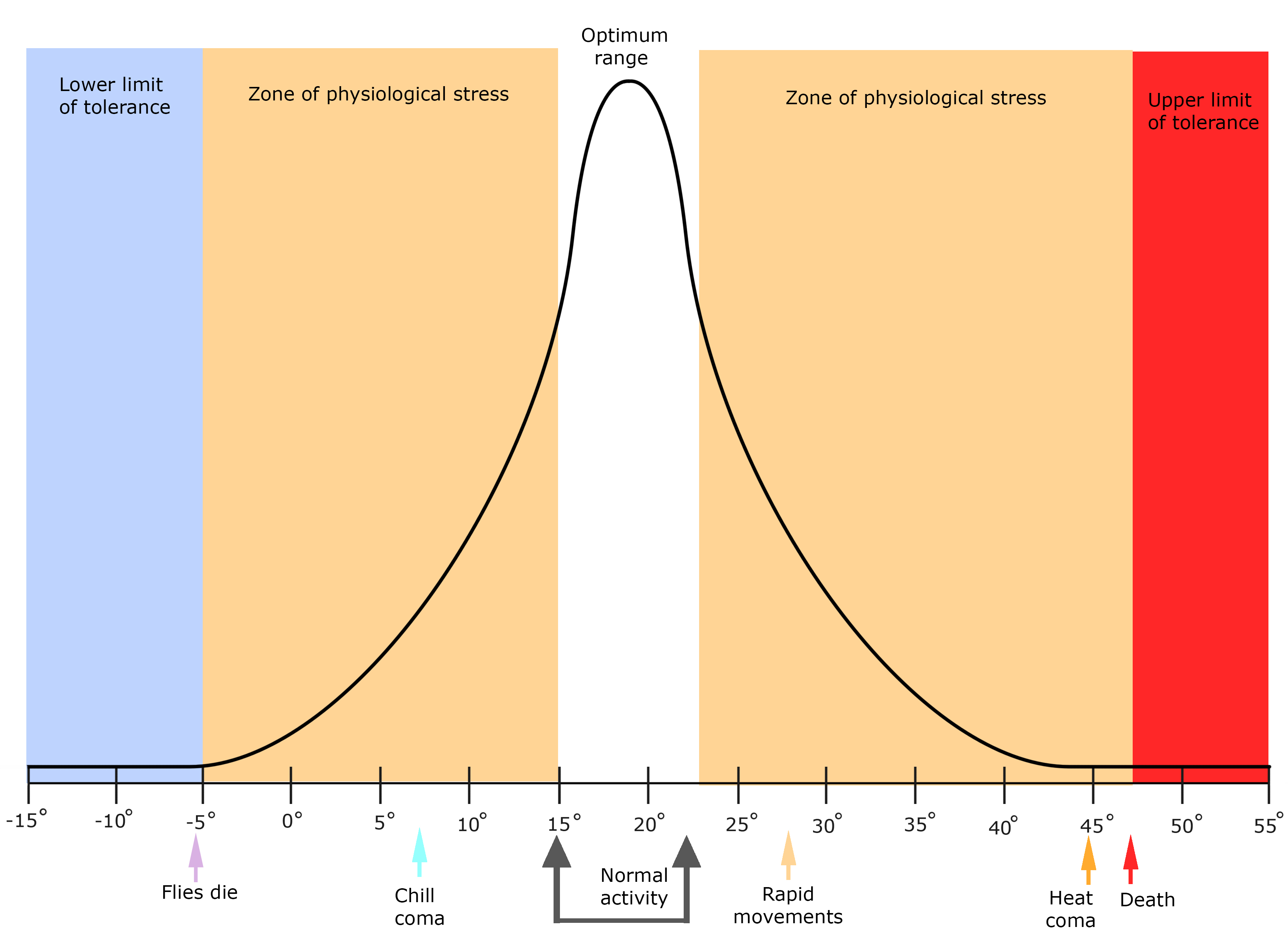A Species Physiological Tolerances Determines Which of the Following
Option A is the correct answer. Example of physiological experiment measuring thermal tolerance limits in brittle stars at the Smithsonian Tropical Research Institute in Bocas del Toro Panama Photo Credit.

The Reflects The Physiological Tolerances Of Two Chegg Com
Valladares in Encyclopedia of Ecology 2008.

. Species tolerances to limiting factors abiotic biotic determine the areas in which the species can exist. The places where its performance is optimized and therefore where it will be found. The literature review followed the same protocols as described above but with the common name or Latin binomial name of each pathogen added to the following search terms.
However currently used indicators of stress show significant interspecific and intraspecific variation in species physiological responses and tolerances to capture. The___reflects the physiological tolerances of two species whereas the ___ includes the effects associated with interactions between the species. In any eco-system a living organism is influenced by a number of factors and forces.
Just as species have geographic ranges they also have tolerance ranges for the abiotic environmental conditions. Light temperature availability of water within which an organism can survive. Plant distribution and relative abundance within its environment is thus.
In other words they can tolerate or survive within a certain range of a particular factor but. 1 out of 1 points Which of the following is a physiological modification used to adapt to environmental conditions. Other comparisons of heart function at extremes of temperature provide data in support of the conclusions reached for porcelain crabs.
Thermal tolerance of Tegula snails found highest in the. The upper and lower limits to the range of particular environmental factors eg. What determines the geographic distribution of species across the Earth is an enduring and fundamental question in ecology.
The portion of the abiotic factors range of variation which a species can survive and function in is commonly defined as the tolerance range. A species will not found. Realized niche fundamental niche fundamental niche realized niche niche dimension.
Exceed a species physiological tolerances. A All of the places it can perform its basic functions and therefore where it can potentially live. The law of tolerance states that-Physical factors are always tolerated -Physical resources are more important than physical factors -There are limits to the physical factors organisms can tolerate -The higher a species tolerance the more successful it is.
Thermal tolerance outbreak temperature and. Tolerance to a drug including alcohol was first described as a form of behavioral plasticity and was defined as a decreased response to repeated drug exposures Kalant 1998Tolerance can be described at different levels of biological complexitymolecular cellular and behavioralor by its temporal characteristics of how rapidly the alcohol affects the. Leaves becoming thick and leathery on a plant growing in a dry hot climate Answers.
Up to 10 cash back Closely related species with different physiological tolerances and distributions make ideal systems for documenting range shifts in response to a changing climate. The physiological response curve Figure 1 describes potential organism distribution limits along an environmental factor or resource gradient in the absence of competition by other speciesHowever the response of species growing intermixed with other. Determine the range of temperatures at which each species of pathogen is known to cause disease in salmon.
Resource gradient resource gradient realized niche. The level within the tolerance range at which a species or population can. A species physiological tolerances determines which of the following.
The tolerance for mated members determines the nature of their connectionthat is greater or lesser freedom of their relative displacement or degree of resistance to relative displacement or fit. Therefore abiotic factors have been found to be the determinant aspects for growth of some plant species Karowe 2003. Up to 10 cash back Studies were carried out to determine the physiological response of few economically important tree species viz Mango Mangifera indica Eucalyptus citriodora Sagon Tectona grandis and Sal Shorea robusta to roadside automobile pollution during 20042005By determining some physiological parameters which included chlorophyll.
The borders of a fundamental niche are determined by physiological tolerances to abiotic factors. The project will provide species-specific data on the physiological temperature and oxygen tolerance limits of three key fish and crustacean species that can be used to model pre- and post-fire habitat suitability to provide environmental threshold triggers for intervention actions population rescue or post-fire run-off mitigation and to. Quantifying the physiological stress response of chondrichthyans to capture has assisted the development of fishing practices conducive to their survival.
Galloprovincialis are sibling species of marine mussels with distinct biogeographical ranges that are correlated with sea surface. This premise should be valid whether the rearing phase occurs in a hatchery or in a natural setting. Young saguaro seedlings sprouting under mesquites Leaves becoming thick and leathery on a plant growing in a dry hot climate Locoweed growing.
C The places where its performance is optimized and therefore. Second hatchery managers have some ability to influence rearing conditions within a hatchery in response to environmental perturbations. Some of the major ecological factors that constitute the environment of an organism are as follows.
A two-member joint consists of a female surface generally called. All species have specific limits of tolerance to physical factors that directly effect their survival or reproductive success. B All of the places it can perform its basic functions and therefore where it will be found.
Biology questions and answers. Article shared by. A species physiological tolerances indicate the upper and lower limit of environmental condition within which a species can survive regardless of whether they are performing all of its activities like reproduction.
Namely that cardiac function is an important determinant of thermal tolerance and warm-adapted species live nearer their thermal limits than cold-adapted species. Individuals of a species can persist Ricklefs 2001. Physiological versus Ecological Optimum Ranges.
Many different physical abiotic non- living factors influence where species live including temperature humidity soil chemistry pH salinity and oxygen levels.


No comments for "A Species Physiological Tolerances Determines Which of the Following"
Post a Comment